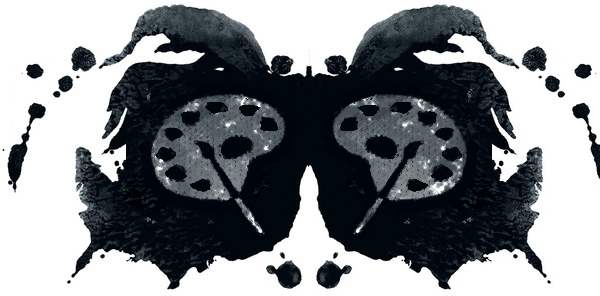
In an email to the student body of the School of the Art Institute of Chicago (SAIC) on November 9, school president Elissa Tenny urged the community come together in the light of a surprising election. She implored students to “recommit to the values of a democratic society that inspire us to find strength in each other and make the world whole.”
That email was reminiscent of another one she sent out in early August lamenting the “senseless acts of violence” the country has experienced this year, which reminding students that “there is great strength to be found in each of us as individuals, and in each other as a community.” Both of Tenny’s emails culminated with the same message: At SAIC, counselors are available. If necessary, students should use them.
According to the National Alliance on Mental Illness about one in 25 adults in the United States — approximately 10 million — have a mental illness that greatly impedes or limits one or more considerable life experiences within a given year. Out of these 10 million, only 41 percent received mental health services in the past year.
An overwhelming amount of people in the United States who suffer from mental illnesses do not receive the help they need. This keeps them from living healthy, productive and functional lives.
Tenny is among those hoping that students at SAIC will be able to access extensive resources in order to prevent major mental health crises. This is especially important at SAIC, as mental health professionals say that art students face particularly intense stresses when compared to students in other academic concentrations. The director of the Rhode Island School of Design’s counseling center, Wayne Assing, wrote in the Chronicle of Higher Education that many majors — psychology, or science, for example — require rote knowledge required for competence in the field. Art students, on the other hand, “are expected to produce something that is original almost from their first class.” This, he goes on to say, isn’t easy.
SAIC student Eseosa Edebiri said, “We go to a rigorous school while still facing stigmas that art school is an easier form of higher education.”
While acquiring an art education, students face many pressures that are academic, social, and emotional. Art students are faced with the challenge of finding a way to use their ideas to communicate something meaningful to their peers and society. These ideas, however, can only be synthesized through a mind that is up for the rigorous task of creating something effectual. This can be difficult while under the scrutinizing eye of many individuals in the world who view art as second tier to other disciplines.
Not only are artists vulnerable to these very specific pressures, but the way artists view the world can often cause them to feel alienated and scrutinized. Kari Stefansson, the CEO of deCODE, a genetics company, spoke on a study done by Nature Neuroscience regarding the possible link of mental illness and creativity. He said, “To be creative you have to think differently … and when we are different we have a tendency to be labeled strange, crazy and even insane.”
There are some studies that claim to have found biological evidence that mental illness and creativity can be concretely linked. A study from Iceland found that genetic factors that raise the risk of bipolar disorder and schizophrenia are found more often in people that have creative professions.
Studies, however, can be unreliable, and scientists have no firm position on whether creativity and mental health are biologically linked. Overall, it is still undetermined whether the phenomenon of high mental illness rates among creative individuals is a result of nature or nurture. Still, for whatever reason, creative types are more likely to suffer.
In the 2015-2016 school year, SAIC lost two students to suicide. Students regularly report missing classes for mental health reasons, according to anecdotal data.
In an article for the Higher Education Chronicle in 2010, Daniel Craig noted that between 10 and 15 percent of students at SAIC were on a psychotropic medication at that time. As he put it, “Those numbers can rise as students deal with the stress of college life.”
SAIC has responded to its mental health community with resources built into the campus’ Wellness Center. Counseling services are offered for all enrolled students — but they are only allocated 16 sessions before students are required to seek outside mental health services.
SAIC student Shunae Drake said, “My interactions with the Wellness Center has made a world of a difference. I encountered an unforeseen experience that dramatically impacted my sense of well-being and I felt generally unsafe. The relationship I formed with an SAIC counselor was one of the only things that helped me hold it all together. She was the greatest source of support.”
But Drake, along with other students, does take issue with the relative restrictions of the Wellness Center, especially on such an at-risk campus.
“For me, the limited number of sessions makes the encounter bittersweet. Just as you are really getting to know someone and open up, you may be over half way finished with your sessions. This may cause you to second guess going or feel the need to save them for a time when you might need them more versus feeling relaxed about the idea that you will be consistently supported the entire time. These sessions were the first time I had ever had access to therapy,” Drake added.
SAIC student Eseosa Edebiri had suggestions about ways in which the Wellness Center might be able to improve without requiring more funds.
“I actually haven’t used all of my 16 sessions and I’m not sure if I will end up using them, which is why it would be useful if there were a process for students to opt out of the rest of their sessions. With that, students who could use the extra sessions could sign up for them or be put on a waiting list opposed to running out and being referred after taking the time to gain comfort from sessions with a specific person,” Edebri said.
Other fine arts colleges provide a similar amount of counseling sessions, and sometimes fewer. Parsons only provides 12 sessions, and the Rhode Island School of Design only provides psychological assessment.
Many general liberal arts colleges and public universities, on the other hand, provide unlimited counseling sessions. Comprehensive mental health resources extend beyond counseling: The JedCampus Foundation awards a seal to colleges that demonstrate “strong, comprehensive solutions to students’ mental health needs.” According to JedCampus, this might include gym access, physical health services, counseling, crisis programs, restricted access to hazardous or illegal materials, and proactive identification of mental health problems, among other things.
Last year, the Wellness Center offered an eight-hour Mental Health First Aid course free of charge to students who wished to become certified. The training was meant to train campus personnel and students to identify and respond to students with mental health problems.
When asked about the current progress of the trainings, Wellness Center Executive Director Joseph Behen said, “To date we have trained 326 staff and faculty members and 460 student leaders. As a result of the MHFA training, SAIC students, staff, and faculty who have participated in the training report high levels of confidence and ability to recognize signs that someone may be be dealing with a mental health problem or crisis , to reach out to someone who may be dealing with a mental health problem or crisis, to actively and compassionately listen to someone in distress, to offer a distressed person basic first aid-level information and reassurance about mental health problems, and to assist a person who may be dealing with a mental health problem or crisis to seek and connect to professional help.”
Graduate student Darryl Terrell said that SAIC can help to foster a more compassionate and comfortable environment where students are more willing to discuss their mental health “if there were group sessions held where students dealing with similar issues could come together and talk.” Sessions like those, however, are so far unavailable.







